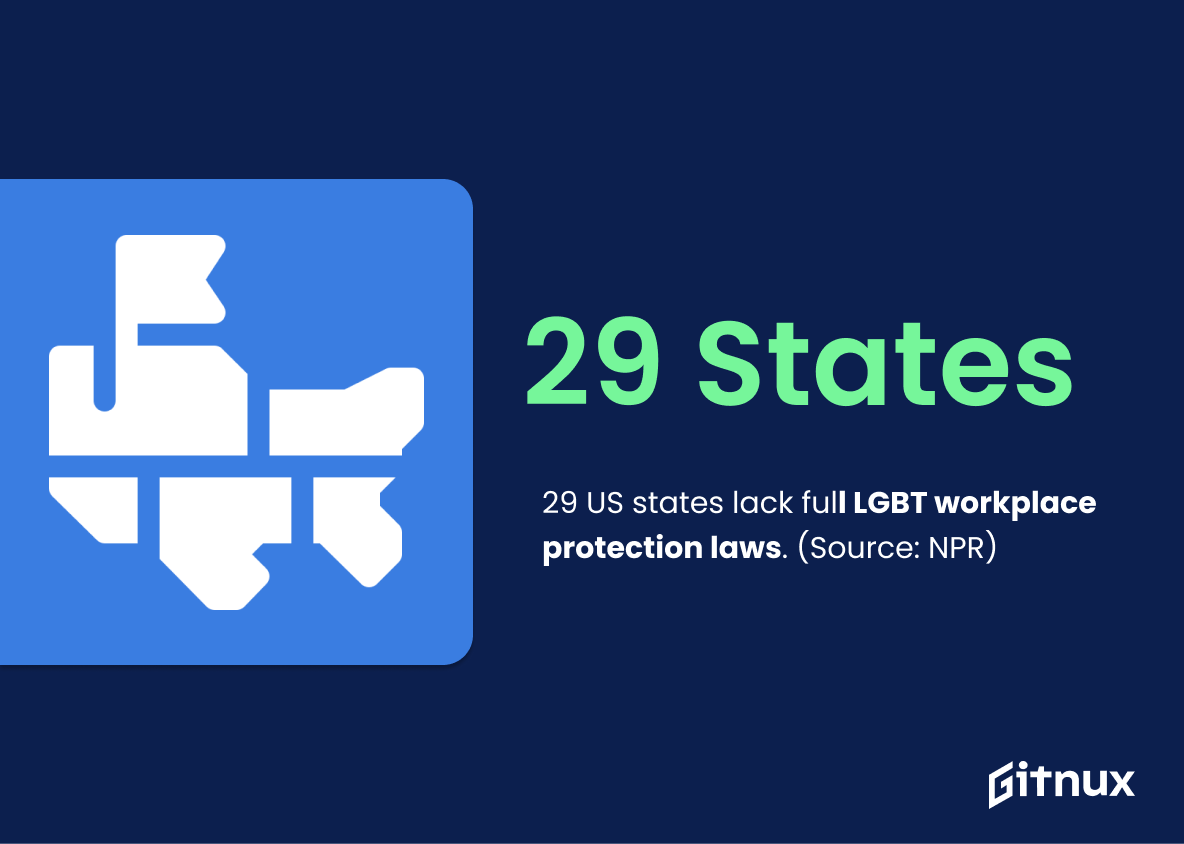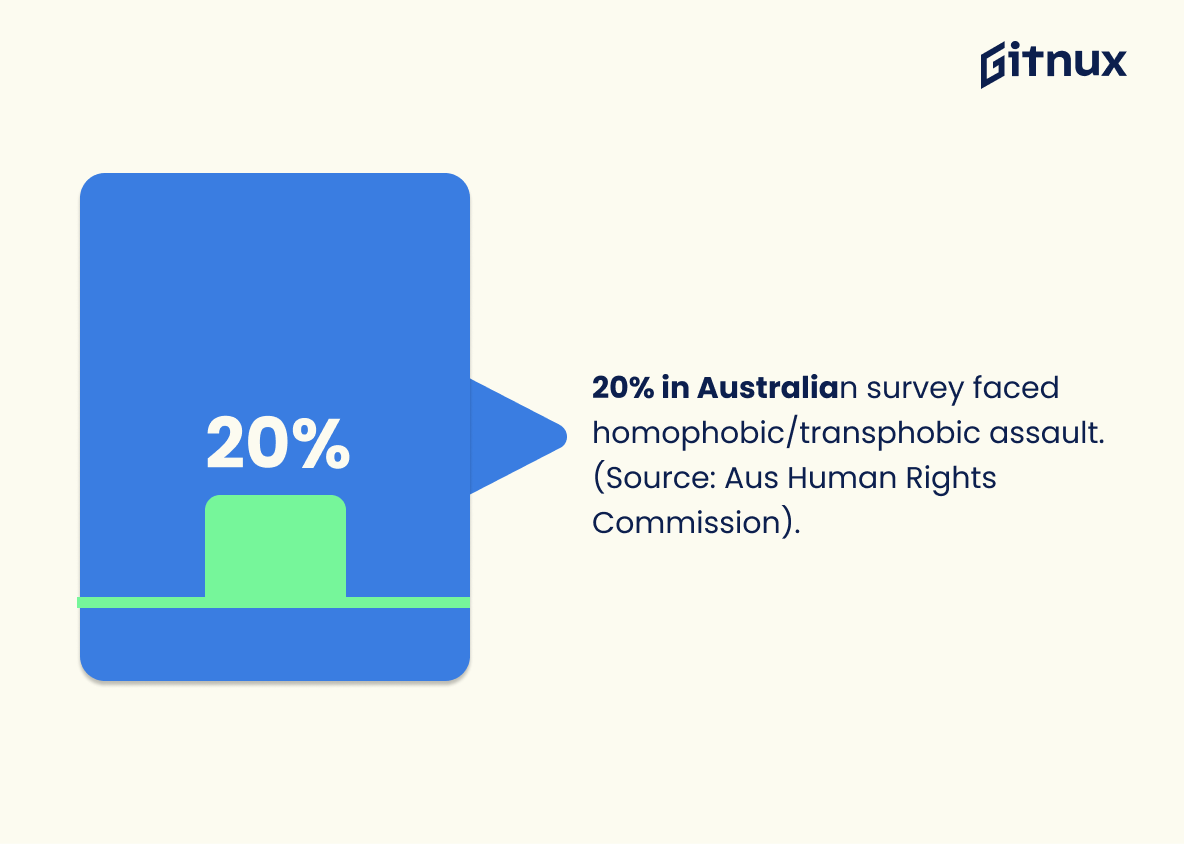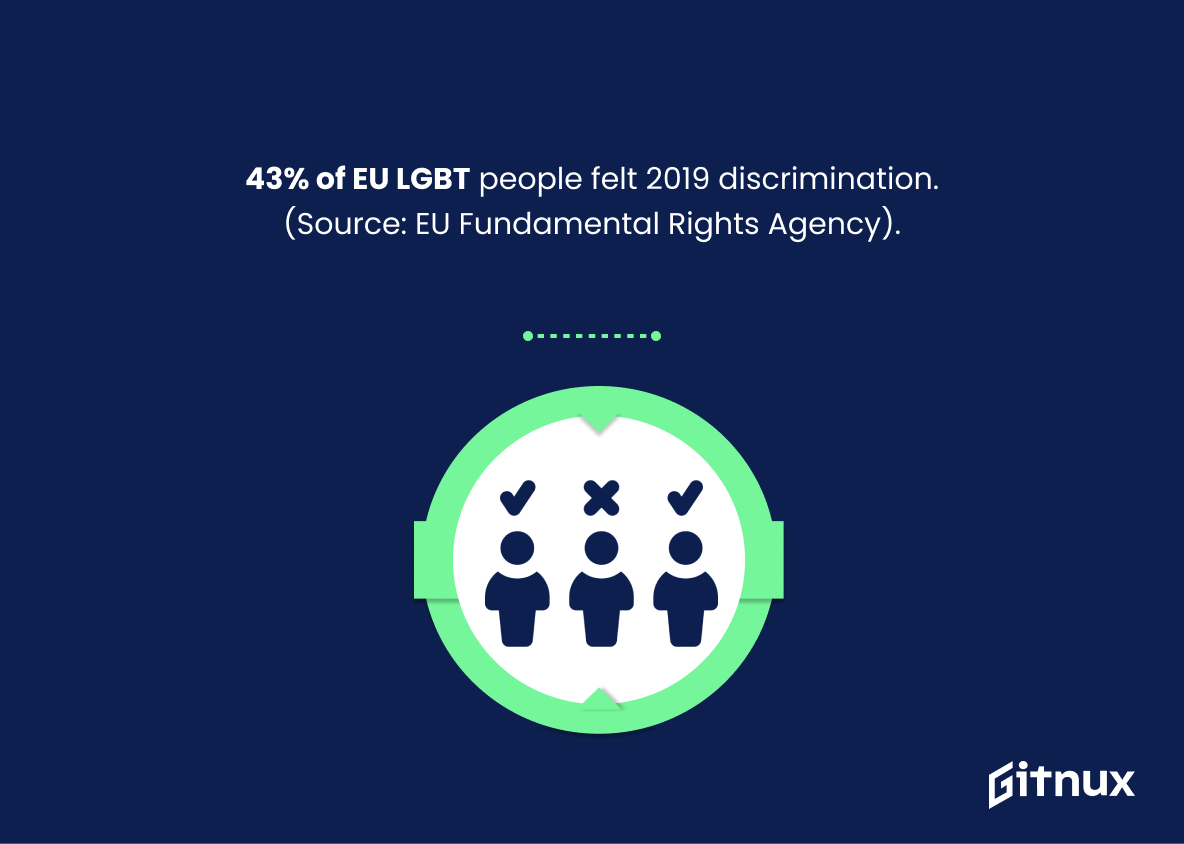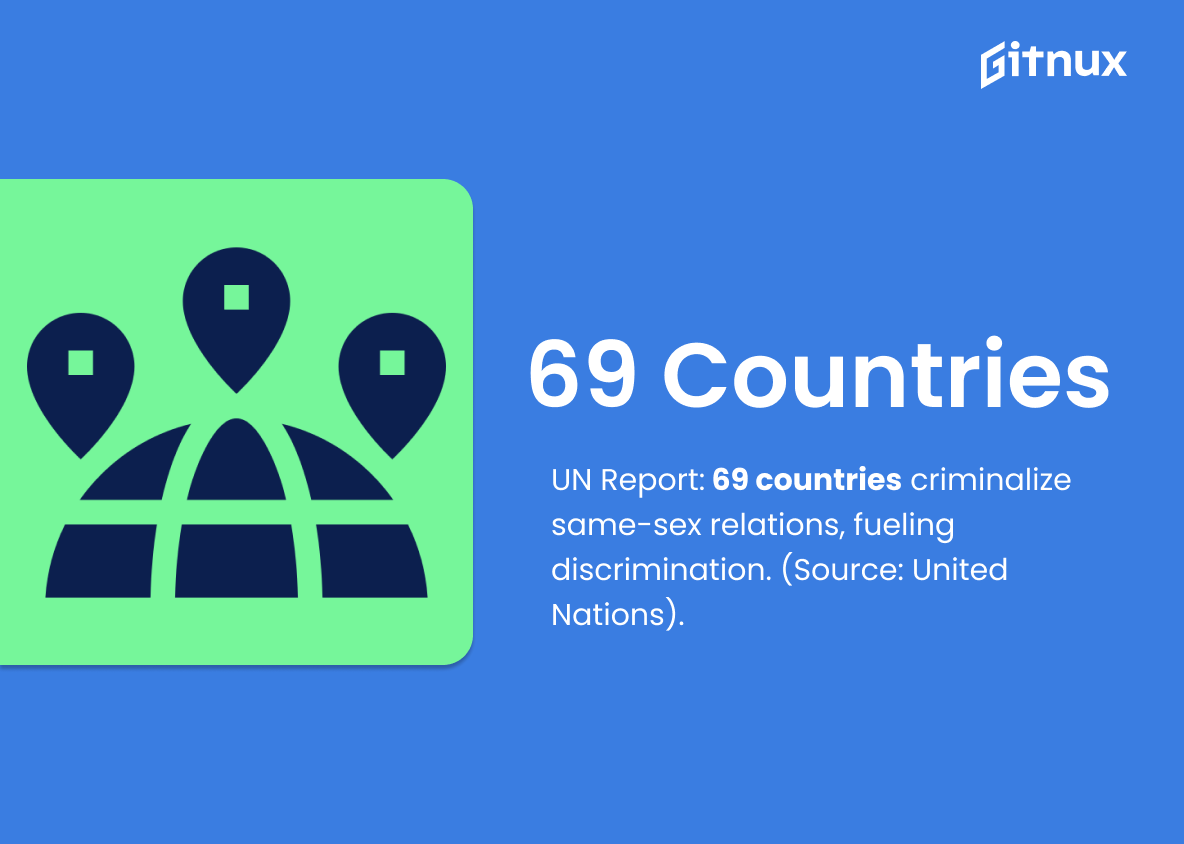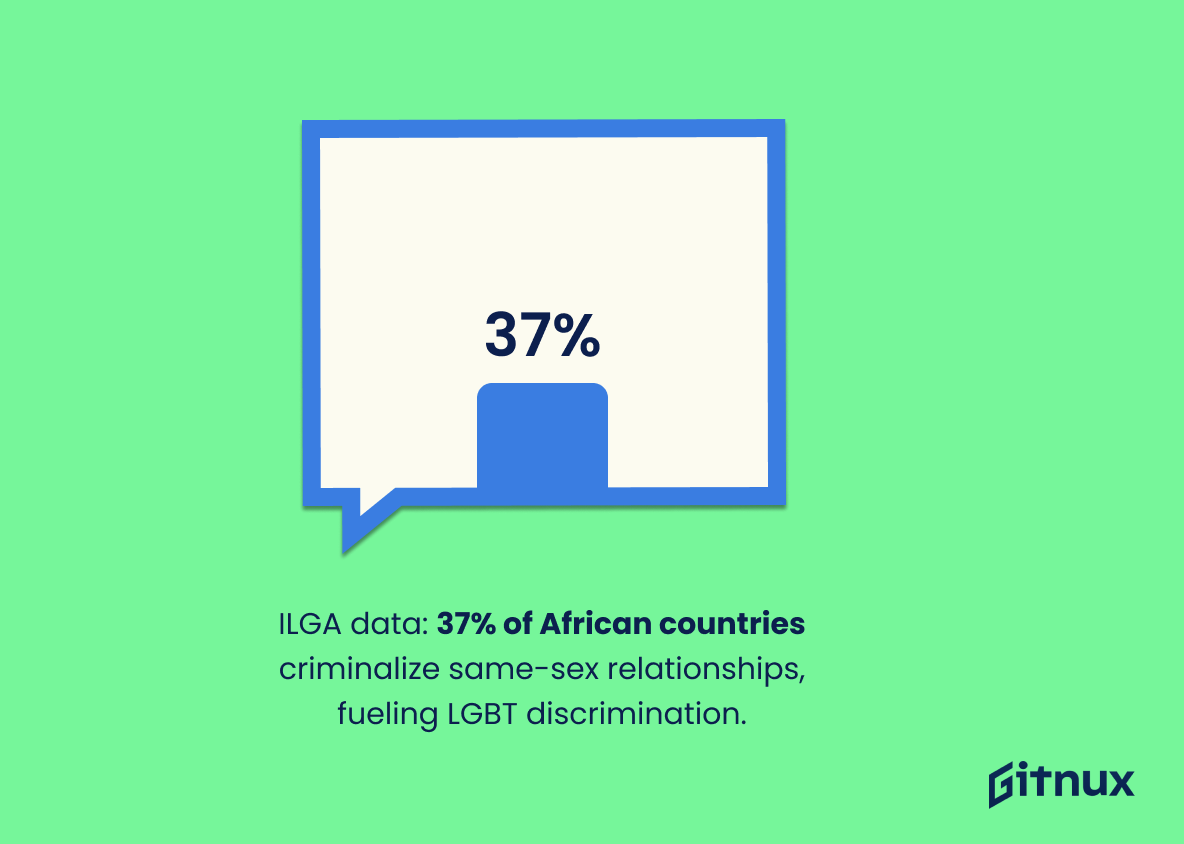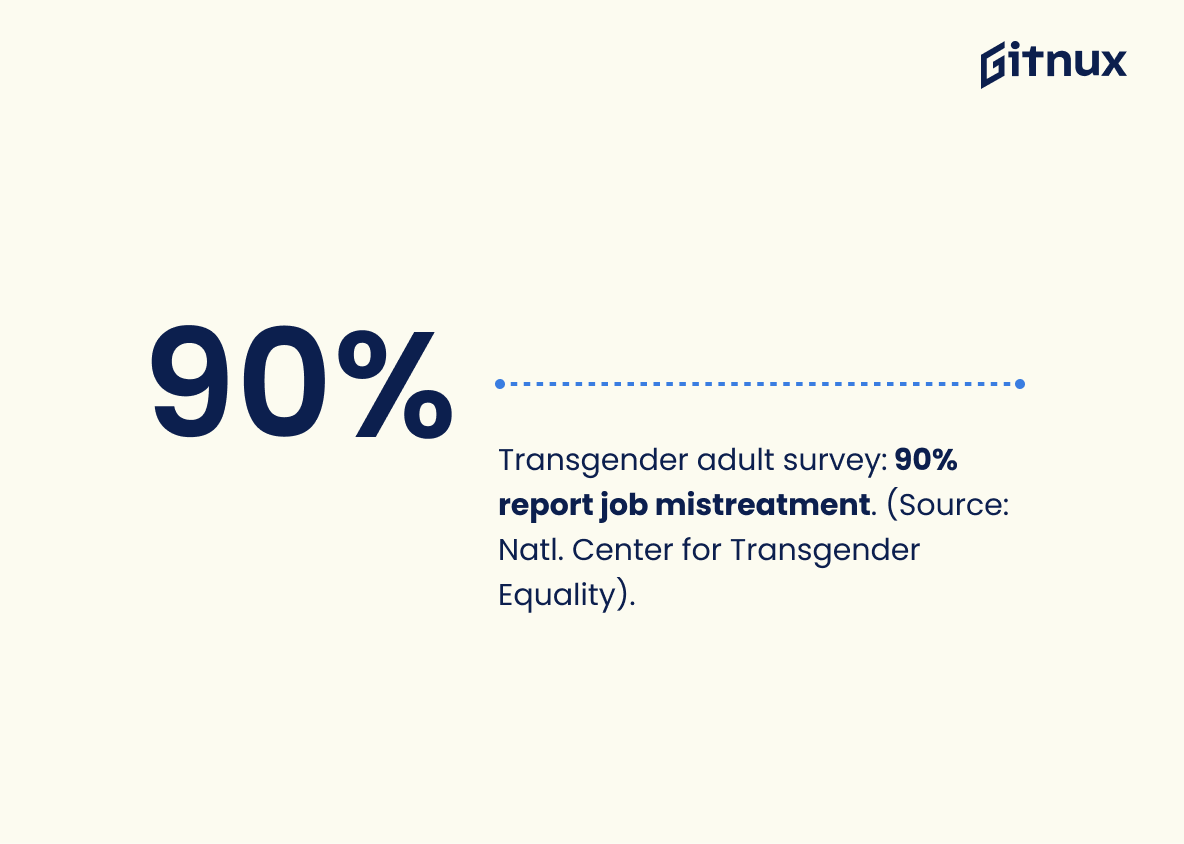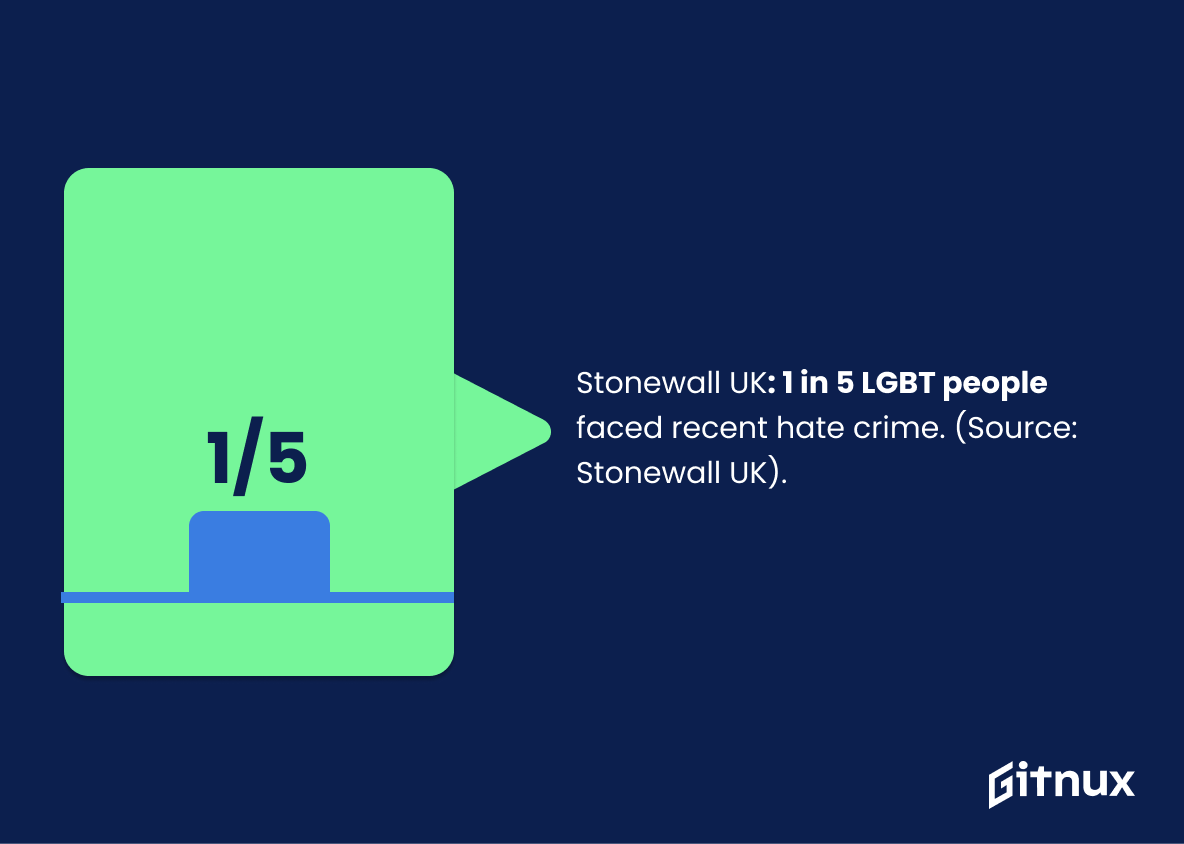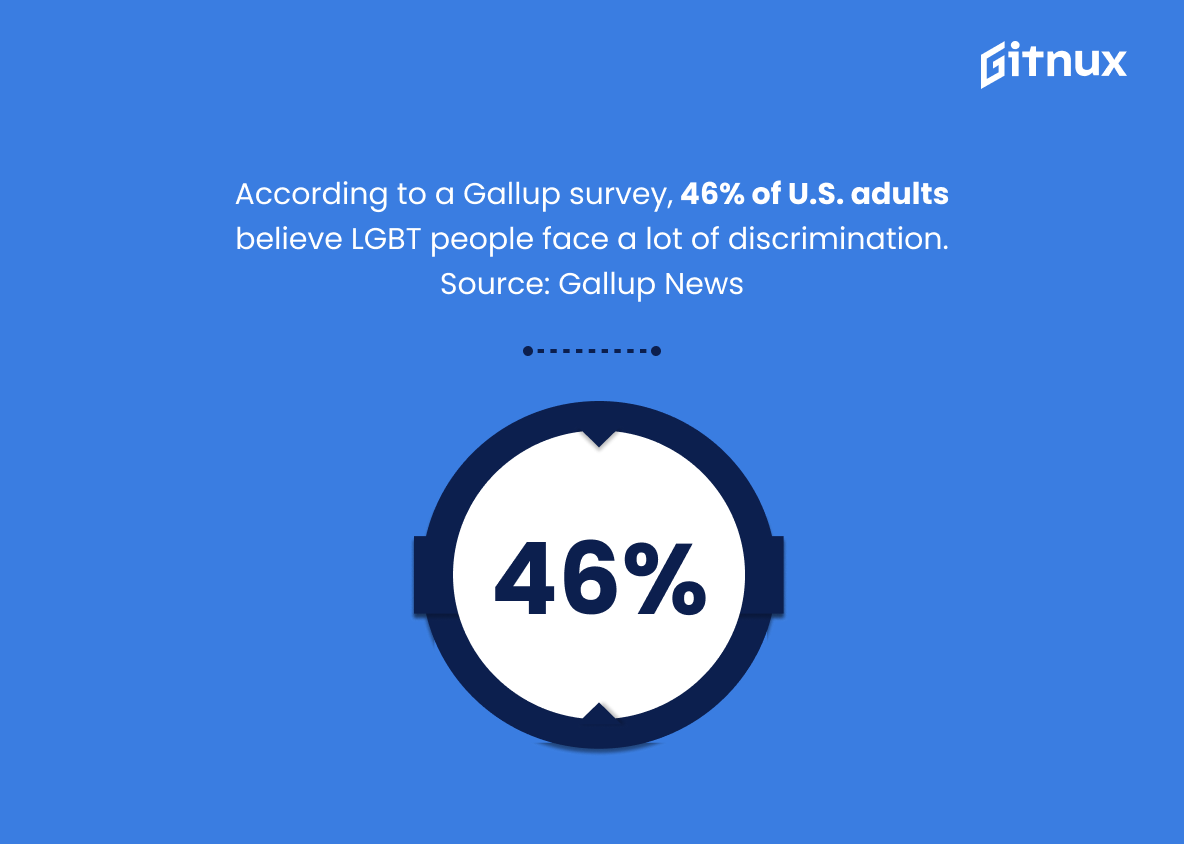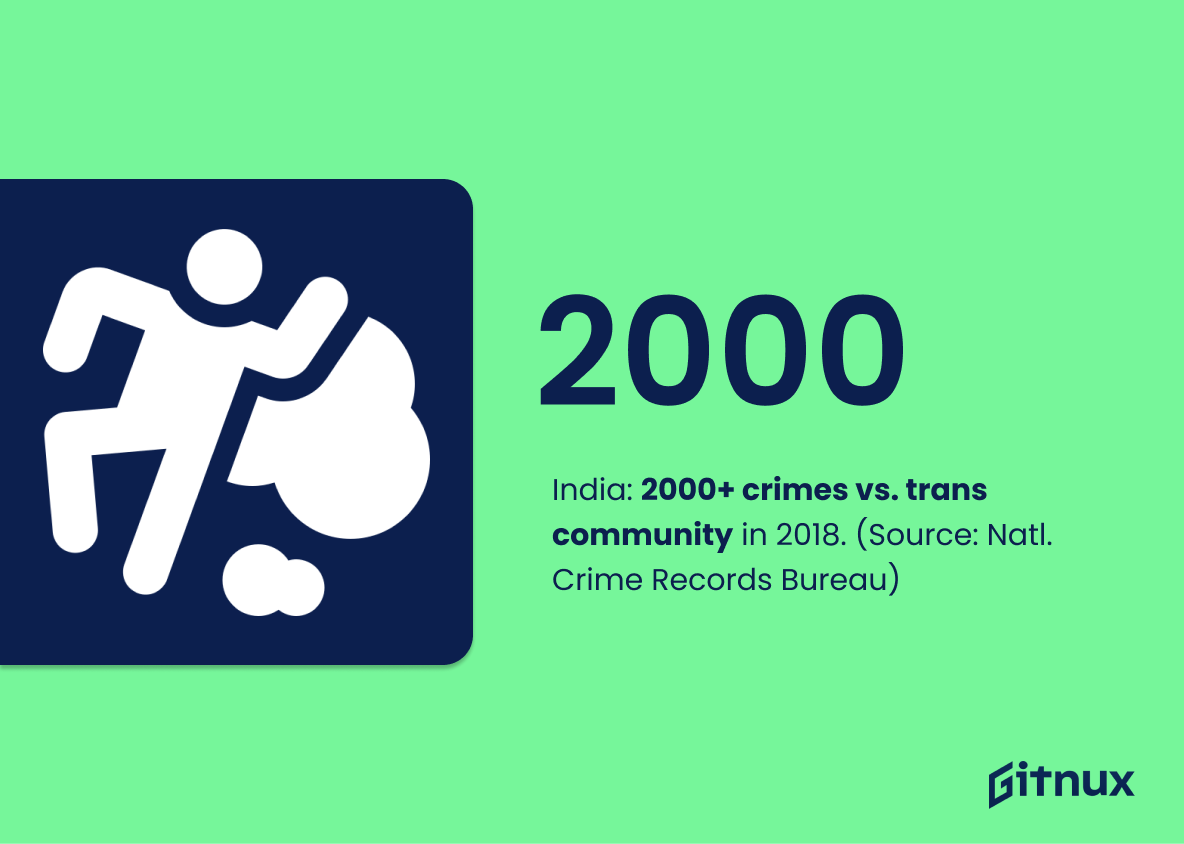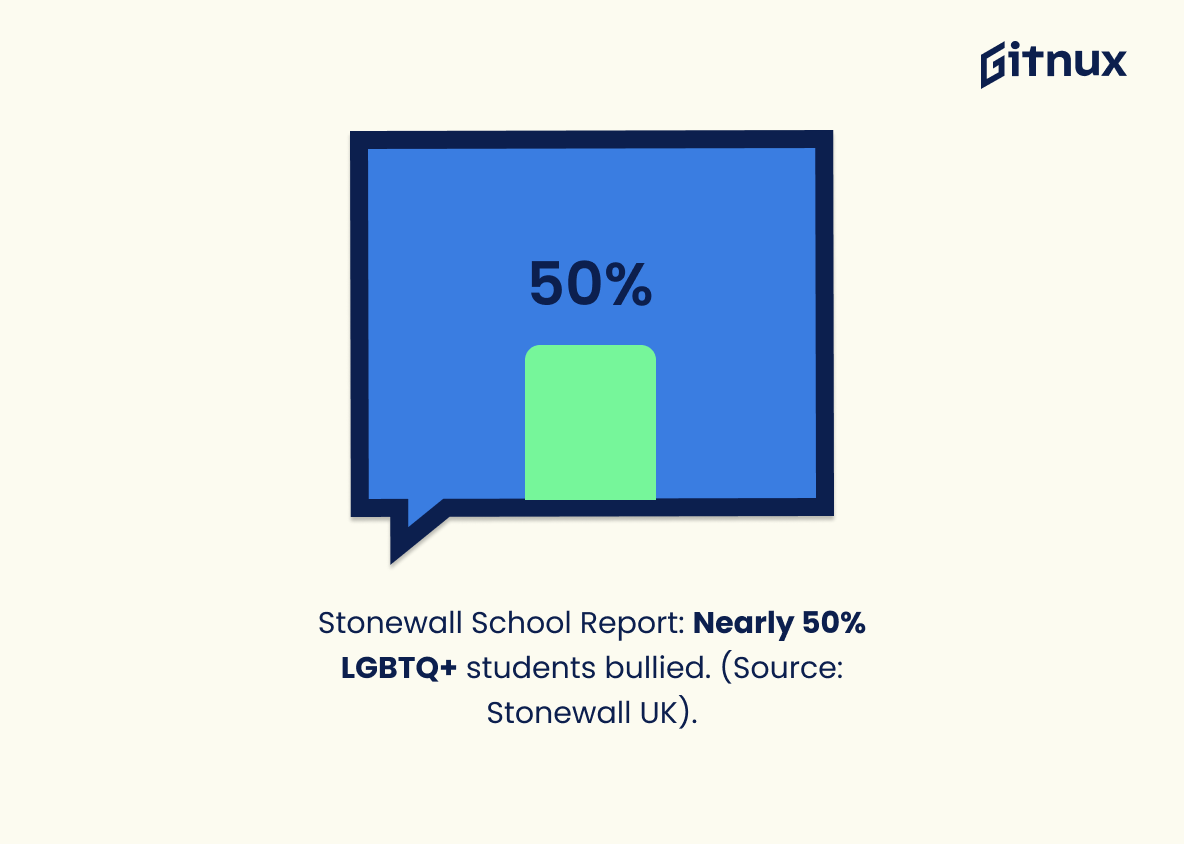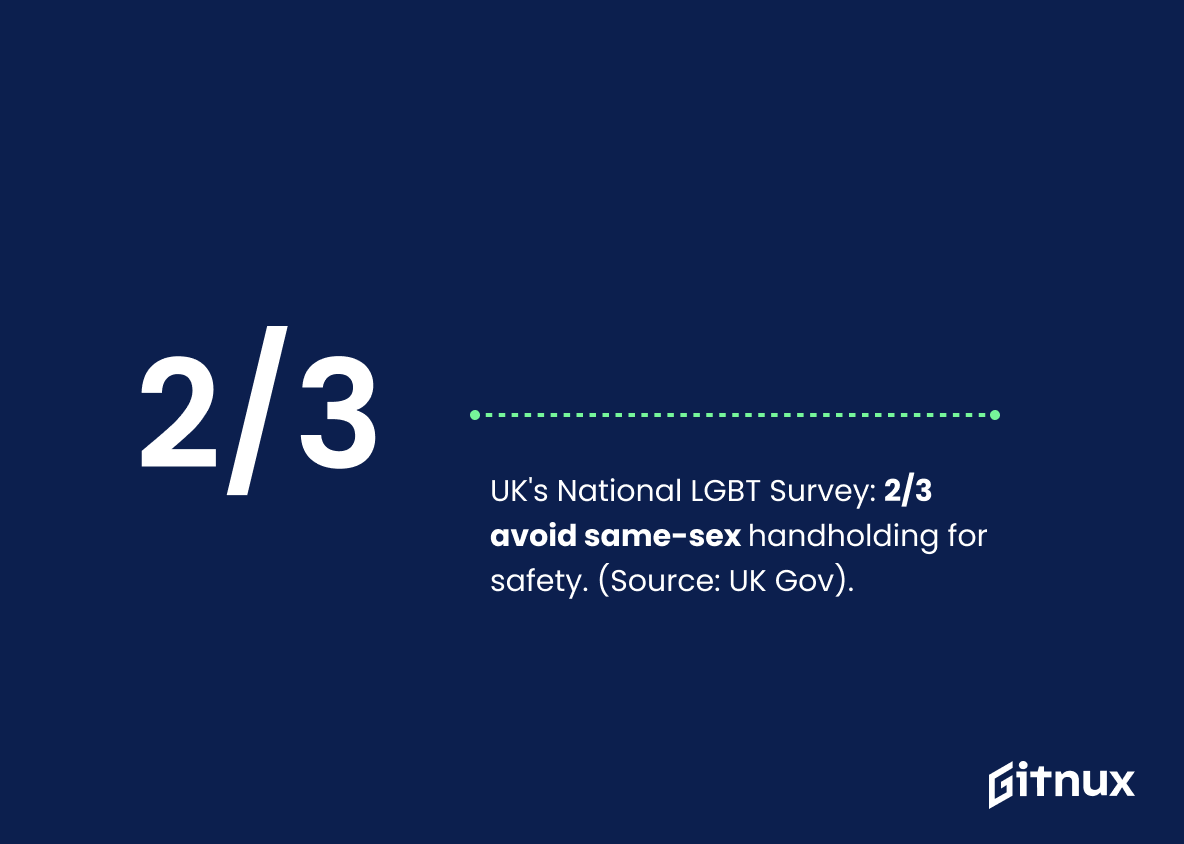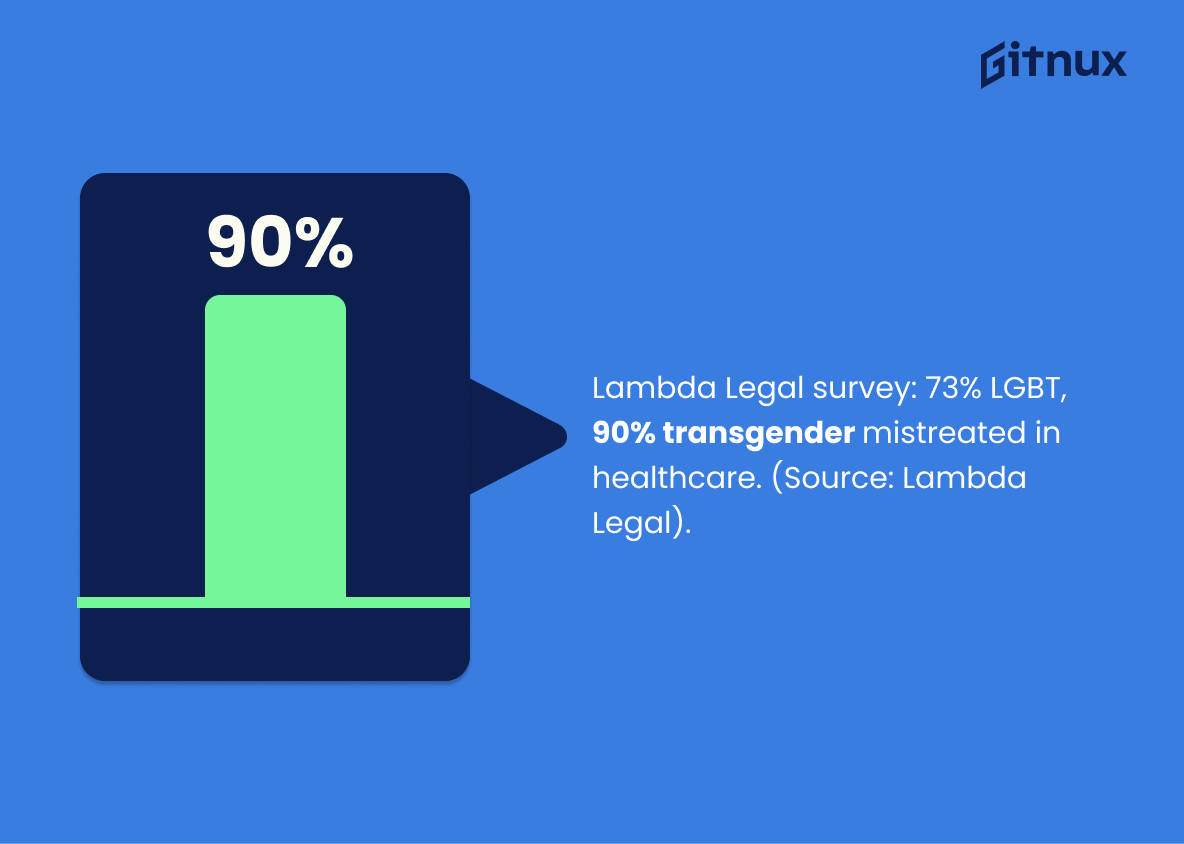In an era where equality, diversity, and acceptance are continually gaining ground, it’s disheartening to acknowledge that discrimination persists. This is particularly true for the lesbian, gay, bisexual, and transgender (LGBT) community, who often face an uphill battle in fighting predjudices and biases. Understanding the true magnitude of this issue requires tangible evidence – numbers, percentages, and figures that reveal the depth and breadth of LGBT discrimination.
This blog post delves into LGBT discrimination statistics, shedding light on the frequency, severity, and widespread nature of such incidents. We aim to present each statistic as a silent plea for change, echoing the voices of countless individuals who face the injustices of discrimination every single day. So, let’s break down the sobering reality of LGBT discrimination and use these figures as fuel to power advocacy, awareness, and action.
The Latest LGBT Discrimination Statistics Unveiled
29 states in the United States lack comprehensive laws that protect LGBT folks from workplace discrimination. Source: National Public Radio
This compelling piece of data underscores the inequality that persists throughout much of the United States. It dramatically exposes the legal void that exists in many states when it comes to safeguarding the rights of LGBT individuals in their places of employment. Collectively, this chilling statistic paints a stark portrait of the significant hurdles faced by these individuals.
The fact that more than half of the nation has not yet established comprehensive protections for LGBT employees is a stark reminder of the progress yet to be made. It underscores the potent relevance and urgent need for an ongoing discussion on LGBT discrimination, lending weight to the gravity of this issue under discussion in our blog post.
Approximately 1 in 4 LGBT adults has experienced discrimination based on sexual orientation or gender identity, according to a 2021 study. Source: Williams Institute
Highlighting this potent data point throws a stark light on the reality of anti-LGBT discrimination, compelling readers to take a sobering pause. The scope of this number, a full quarter of LGBT adults, unearths the pervasive nature of discrimination in our society. By underlining the findings of Williams Institute in this 2021 study, we reinforce the empirical backbone of our discussion, grounding it in solid research.
This statistic serves as a call to action for policymakers, social advocates, organizations, and individuals, urging a substantial rethink and revamp of responses towards discrimination based on sexual orientation or gender identity. A single statistic, thus transforms from being a mere number, to a poignant tale of the LGBT community’s lived experience, thereby enhancing the impact and purpose of our blog post on LGBT Discrimination Statistics.
47% of LGBTQ+ adults faced discrimination of some kind in the year 2019. Source: Pew Research Center
The narrative surrounding LGBTQ+ discrimination comes into sharp focus with the striking revelation from Pew Research Center: in just one year, 2019, an alarming 47% of LGBTQ+ adults experienced some form of discrimination. The weight of this figure in a blog post on LGBTQ+ Discrimination Statistics illuminates the very real, pervasive issue of prejudice against this community.
Notably, this statistic doesn’t merely register as a dry number — it pulses with urgency, capturing the experiences of nearly half of all LGBTQ+ adults within a single year. Thus, it galvanizes readers to not only acknowledge the widespread issue of discrimination but also advocate for actions to eradicate it.
20% of respondents in an Australian survey reported that they have ever experienced physical and/or verbal homophobic or transphobic assault. Source: Australian Human Rights Commission
The striking statistic from the Australian Human Rights Commission unearths a startling reality— one in five respondents have faced the life-altering impact of physical or verbal homophobic or transphobic assaults. Shedding light on this severe issue, this statistic embodies more than just numbers; it echoes the voices of those silenced by prejudice and discrimination.
As we delve into the labyrinth of LGBT discrimination statistics, this statement serves as a sobering cornerstone. It spurs us to acknowledge the prevalent bias, enabling a comprehensive dialogue to dismantle the walls of discrimination. In the grand tapestry of a blog post about LGBT discrimination, this statistic is the thread that pulls the narrative together, urging readers to recognize the distressing truth and inspiring change.
As per the European Union’s survey, 43% of LGBT people felt discriminated against in the year 2019. Source: European Union Agency for Fundamental Rights
The survey conducted by the European Union Agency for Fundamental Rights, unveiling that a sizeable 43% of LGBT people experienced discrimination in 2019, garlands a harsh reality with figures, solidifying our comprehension of the pervasive issue of LGBT discrimination. This figure serves as an emblematic microcosm of the institutionalized injustice faced globally. It illumines our understanding, infusing the blog post with a palpable example of the scale of discrimination, and embedding the issue firmly in the milieu of the European Union.
This digit, 43%, is not just a percentage, but encapsulates the cries for justice of nearly half the LGBT population in Europe, furnishing us with evidentiary backing of the societal pressure faced by the community. It’s a numerical call to arms in the fight for equality, a valuable asset in our informational arsenal for a blog post focused on LGBT Discrimination Statistics.
A UN Report reveals that same-sex relationships are criminalized in 69 countries globally, which promotes discrimination. Source: United Nations
Diving into the chilling reality of this UN report, it illustrates a world where love is policed, illuminating the dark crevices of discrimination. With 69 countries criminalizing same-sex relationships, it not only paints a picture of widespread intolerance, but it also quantifies the daunting challenges faced by the LGBT community. Interpreted through the lens of LGBT Discrimination Statistics, it serves as a stark reminder of the worldwide struggle for acceptance, equally underlining the necessity for change.
This statistic is far from being an inert number, rather, it beats with the urgent rhythm of human rights advocacy, following the heartbreaking beat of legal persecution. Undoubtedly, these figures are a rallying cry for increased awareness, dialogues, and transformative action to combat such deep-seated discrimination.
Data from ILGA shows that 37% of countries in Africa criminalize same-sex relationships, a major basis for LGBT discrimination. Source: ILGA
Delving into the aforementioned statistic from ILGA sheds undeniable light onto the grim reality of the existing socio-legal landscape in Africa. In a staggering 37% of African countries, same-sex relationships are treated as criminal offenses, forming an iron-clad foundation for widespread LGBT discrimination. This raw number vividly punctuates the narrative of a blog post focusing on LGBT Discrimination Statistics, underscoring the urgency and magnitude of the issue in Africa.
The figure, albeit distressing, elevates the discourse surrounding LGBT rights, propelling it from vague awareness to a tangible form mirrored in hard data, ultimately advocating for necessary societal change.
From a survey of transgender adults, 90% report some form of harassment or mistreatment on the job. Source: National Center for Transgender Equality
Highlighting a key revelation from the National Center for Transgender Equality, we discover a shockingly high percentage – 90% – of transgender adults who report experiencing harassment or mistreatment in their workplace. This powerful statistic not only underlines the widespread issue of discrimination within the professional realm against transgender people, but also serves to emphasize the critical nature of the challenges many in the LGBT community face.
This disturbing truth could potentially act as an eye-opener for readers, inciting action and invoking advocacy for healthful change. Additionally, it underscores a convicting narrative that clarifies a social problem which needs our collective attention and action to rectify.
Stonewall UK reports that one in five LGBT people have experienced a hate crime or incident because of their sexual orientation and/or gender identity in the last 12 months. Source: Stonewall UK
Painting a vivid and harrowing picture, Stonewall UK uncovers the distressing reality endured by 20% of LGBT individuals – flagging a frightening encounter with hate crime or incidents triggered by their sexual orientation or gender identity within the past year. This jarring disclosure injects an undeniable human element into the dispassionate world of numbers and data.
It underscores the urgency of addressing LGBT discrimination illuminated so starkly in our blog post on the subject. The statistic acts as a compass, guiding us through the labyrinth of discrimination, reminding us that each number represents a human being, a story, and a battle against prejudice, thus, reinforcing the necessity of this conversation.
According to a Gallup survey, 46% of U.S. adults believe LGBT people face a lot of discrimination. Source: Gallup News
The significant pulse of this statistic brings into sharp focus the stark reality of public perception surrounding the challenges borne by the LGBT community. Grounded in the authority of Gallup’s research, that nearly half of U.S. adults acknowledge the extent of discrimination faced by LGBT individuals weaves a compelling narrative.
It directly taps into the essence of the societal issue being dissected in a blog post about LGBT Discrimination Statistics, granting weight to the discussion and often prompting a deeper exploration into the causes, implications and potential solutions. Through this lens, the topic is no longer seen as a fringe issue, but part of the broader socio-political fabric that affects larger narratives as well.
The National Crime Records Bureau of India reports that more than 2000 crimes were committed against the transgender community in 2018. Source: National Crime Records Bureau of India
Embedding a statistic of this magnitude underscores the alarming reality that the transgender community in India face, as documented by the National Crime Records Bureau. This sharp spotlight on the sheer number of crimes committed against them in 2018 alone—an excess of 2000 acts—provides more than just a number. It is a stark tangible evidence illuminating the depth and extent of discrimination this group endures. Hence, it forms a powerful backbone to a blog post discussing LGBT discrimination statistics, emphasizing the urgent need for societal change and laying compelling grounds for policy reform aimed at better protecting LGBT rights.
According to Stonewall School Report, almost half of all LGBTQ+ pupils still face bullying at school for being LGBTQ+. Source: Stonewall UK
Unveiling the reality behind the distressing statistic from Stonewall School Report, it casts a spotlight on the continuing struggles faced by the LGBTQ+ pupils in schools, primarily bullying based on their sexual orientation. This statistic works as a potent reminder that discrimination hasn’t been fully eradicated from our educational institutes, painting a stark picture of the trials LGBTQ+ students endure daily. Furthermore, in crafting a blog post about LGBT Discrimination Statistics, it serves as a compelling argument, compelling readers to account for the prevalent adversity and ignites a call to action for change.
The National LGBT Survey of UK concluded that two-thirds of respondents would avoid holding hands with a same-sex partner for their safety. Source: Government of UK
From the kaleidoscope of data presented in the National LGBT Survey of UK, this particular statistic is a stirring revelation that exposes the underlying pulse of trepidation that still circulates within the LGBT community. The revealing truth that two-thirds of respondents would restrain from a simple act of affection, such as hand-holding, out of concern for their safety lays bare the haunting specter of discrimination that still subsists in society.
In a blog post that snakes through the tangled jungle of LGBT discrimination statistics, this stunning insight encapsulates an alarming reality. It acts as a sobering reminder of the persistent societal pressures and prejudice that this community grapples with, as they navigate through the complex labyrinth of acceptance and inclusivity.
Survey by Lambda Legal showed that nearly 73% of LGBT respondents and nearly 90% of transgender respondents have experienced some kind of mistreatment in a health care setting. Source: Lambda Legal
Underpinning a blog post about LGBT Discrimination Statistics, the Lambda Legal survey paints a vivid picture, breathing life into the harsh reality faced by the LGBT community, particularly transgender individuals, within healthcare settings. The startling figures – 73% of LGBT respondents and almost 90% of transgender respondents having faced maltreatment – underscore the extent of systemic discrimination experienced by this population.
These undeniable numbers remind us of the urgent, ongoing fight for equal rights and respectful treatment, shining a spotlight on the magnitude of change required within our healthcare institutions. It triggers a call to action for readers, propelling them not just to comprehend the statistical evidence, but to understand the human narrative behind the numbers.
Conclusion
Discrimination against the LGBT community is a pervasive issue globally and the supporting statistics underscore the magnitude of this challenge. These hard numbers reveal the grim reality of the struggles and injustices this demographic encounters daily. However, they also spur us on to advocate for change, equality, and acceptance. By examining these statistics, we gain a better understanding of where efforts to promote inclusivity and anti-discrimination need to be focused.
Grounded in empathy, it is crucial that we use this knowledge to develop more policies and interventions that will address LGBT discrimination. Ultimately, every individual regardless of their sexual orientation or gender identity, has the right to live free from prejudice and discrimination. These statistics represent not just numbers, but real people whose rights demand our vigilant advocacy and determined action.
References
0. – https://www.www.pewresearch.org
1. – https://www.www.npr.org
2. – https://www.news.gallup.com
3. – https://www.www.humanrights.gov.au
4. – https://www.www.lambdalegal.org
5. – https://www.transequality.org
6. – https://www.www.un.org
7. – https://www.fra.europa.eu
8. – https://www.www.stonewall.org.uk
9. – https://www.ilga.org
10. – https://www.williamsinstitute.law.ucla.edu
11. – https://www.ncrb.gov.in
12. – https://www.www.gov.uk
